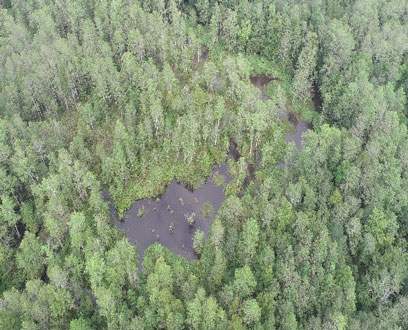
THE PROJECT
1,100-acre Bank in Dillon and Marion Counties, South Carolina
The Great Pee Dee Mitigation Bank (“GPDMB”) site, which was formerly used for timber harvesting, is protected in perpetuity through a conservation easement. The mitigation construction plan focuses on restoring/preserving over seven miles of stream, including close to two miles of the Great Pee Dee River front. Almost 300,000 native trees will be planted as part of the site restoration activities, which include flattening and widening stream banks, removing obstructions interfering with stream flow, and removing invasive species.
In return for the planned restoration activities, the United States Army Corps of Engineers will release mitigation credits which can be sold to third parties. These include but are not limited to permittees in need of compensatory mitigation associated with authorized (permitted) impacts occurring in GPDMB’s service area.
Service Area: The GPDMB primary service area includes the Middle Pee Dee River Subbasin, 8-digit Hydrologic Unit Code (HUC) 03040201. The bank’s secondary service area includes the adjacent Lynches River, Lumber River, and Little Pee Dee River Subbasins (HUCs 03040202, 03040203, and 03040204) within the Southeastern Plains Ecoregion
Mitigation Services: The wetland and stream restoration and enhancement services for the GPDMB have been coordinated with the regulatory agencies by The Palustrine Group, LLC
Credits: The GPDMB is expected to generate over 1,200 wetland credits and over 65,000 stream credits
Benefits of Stream & Wetland Mitigation
By permanently protecting natural resources and compensating for local stream and wetland impacts, the GPDMB is investing in South Carolina’s environmental and economic success

Protecting the Environment
The GPDMB permanently protects its natural resources by recording a conservation easement on the property in perpetuity. The site protection is managed and overseen by an accredited local non-profit, Pee Dee Land Trust.

Mitigation Credits
The GPDMB provides mitigation credits to offset unavoidable wetland and stream impacts. Purchasing credits allows developers and landowners to eliminate risk and ongoing expenses associated with traditional on- or off-site mitigation.